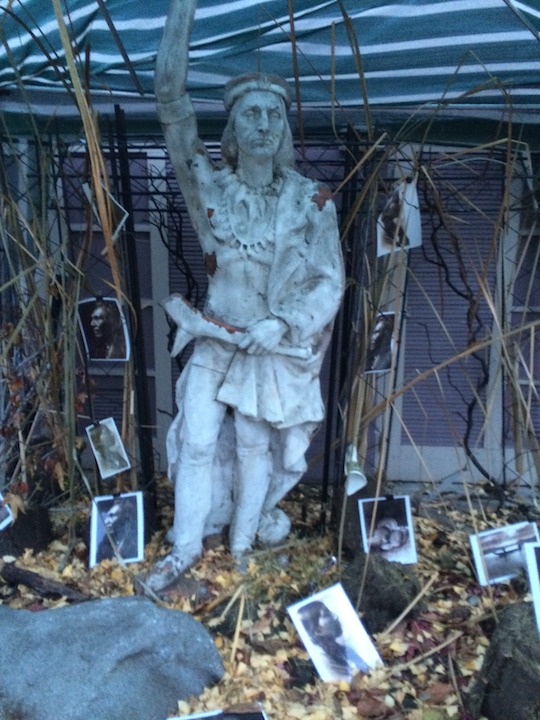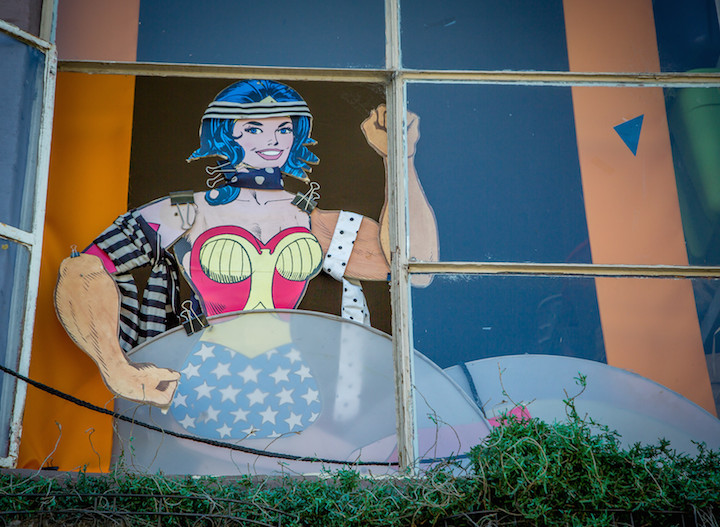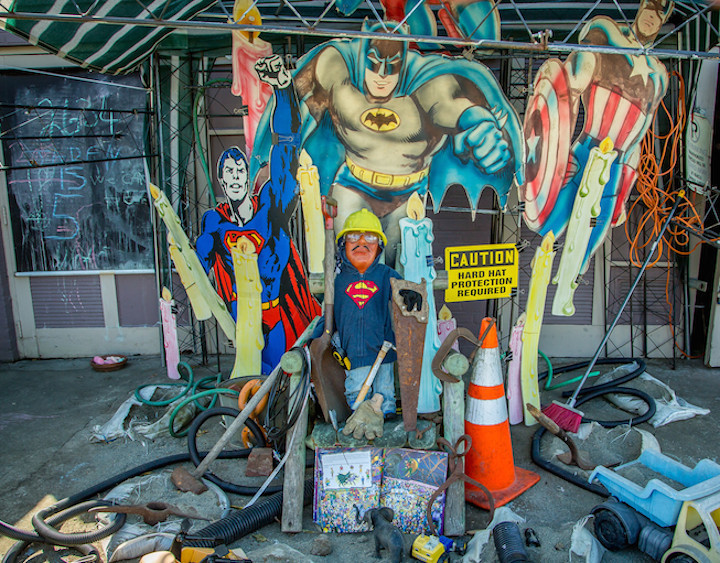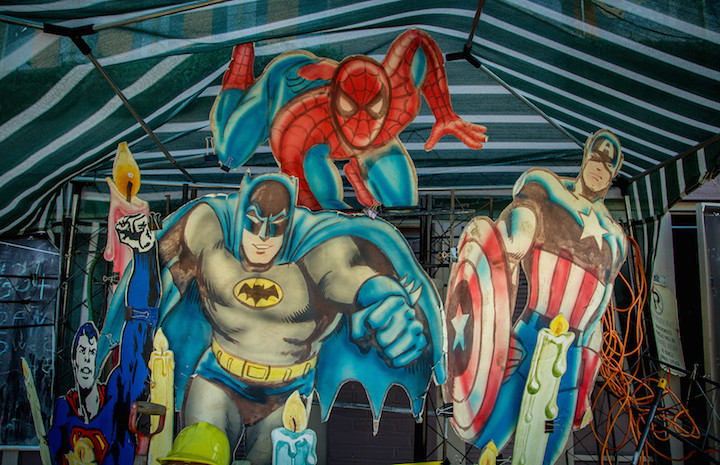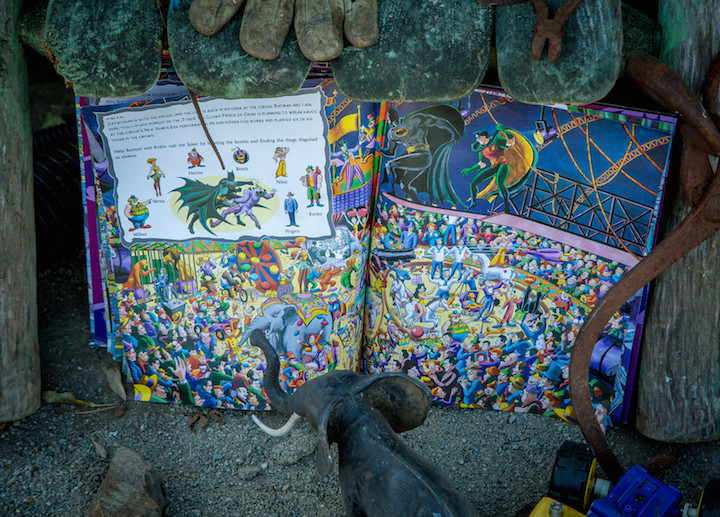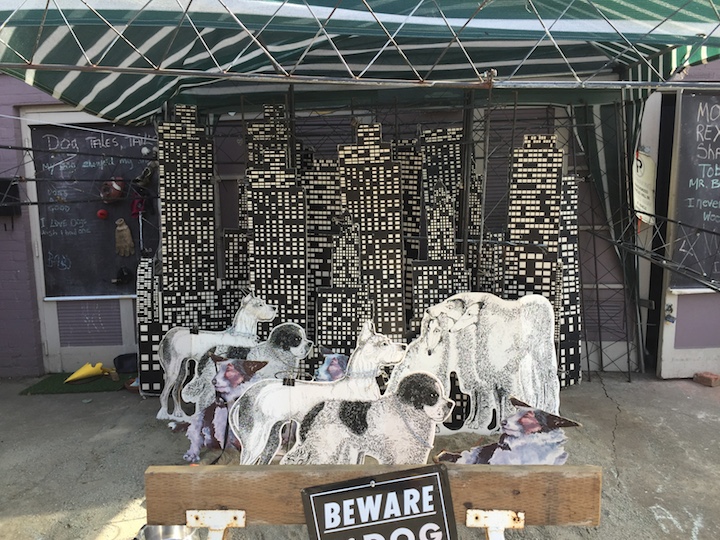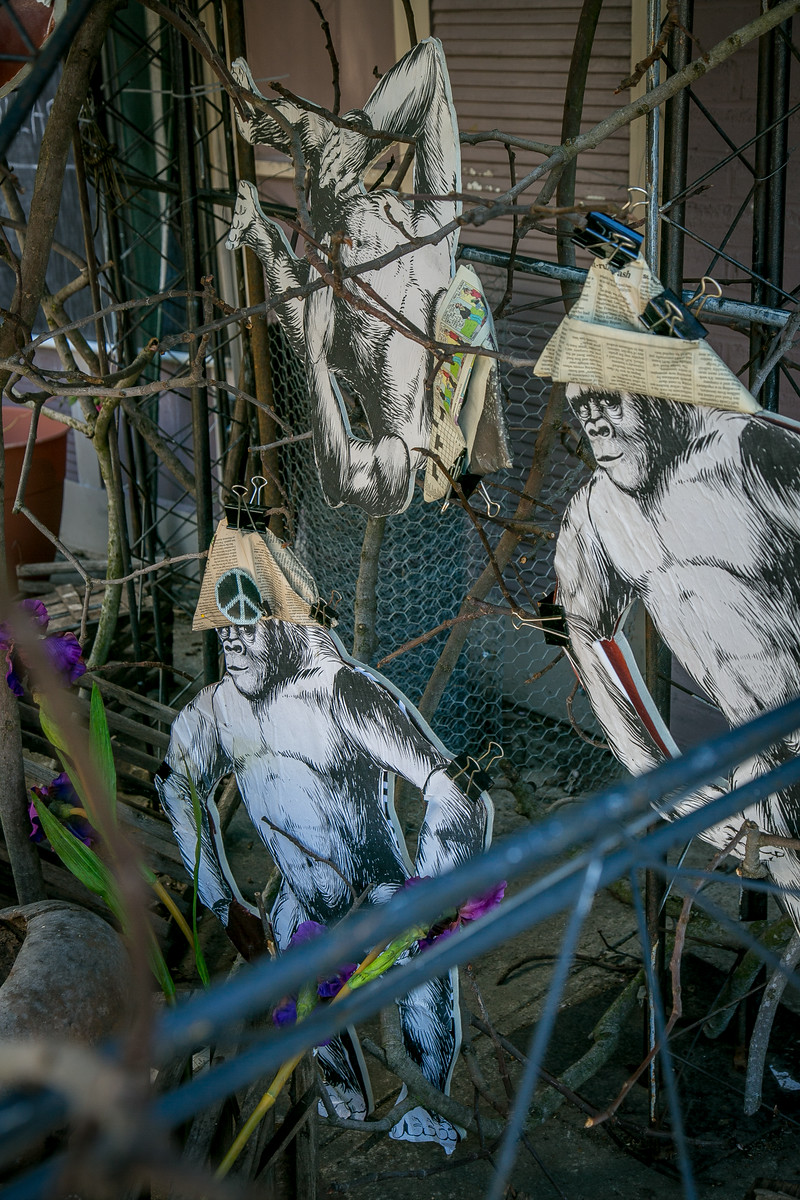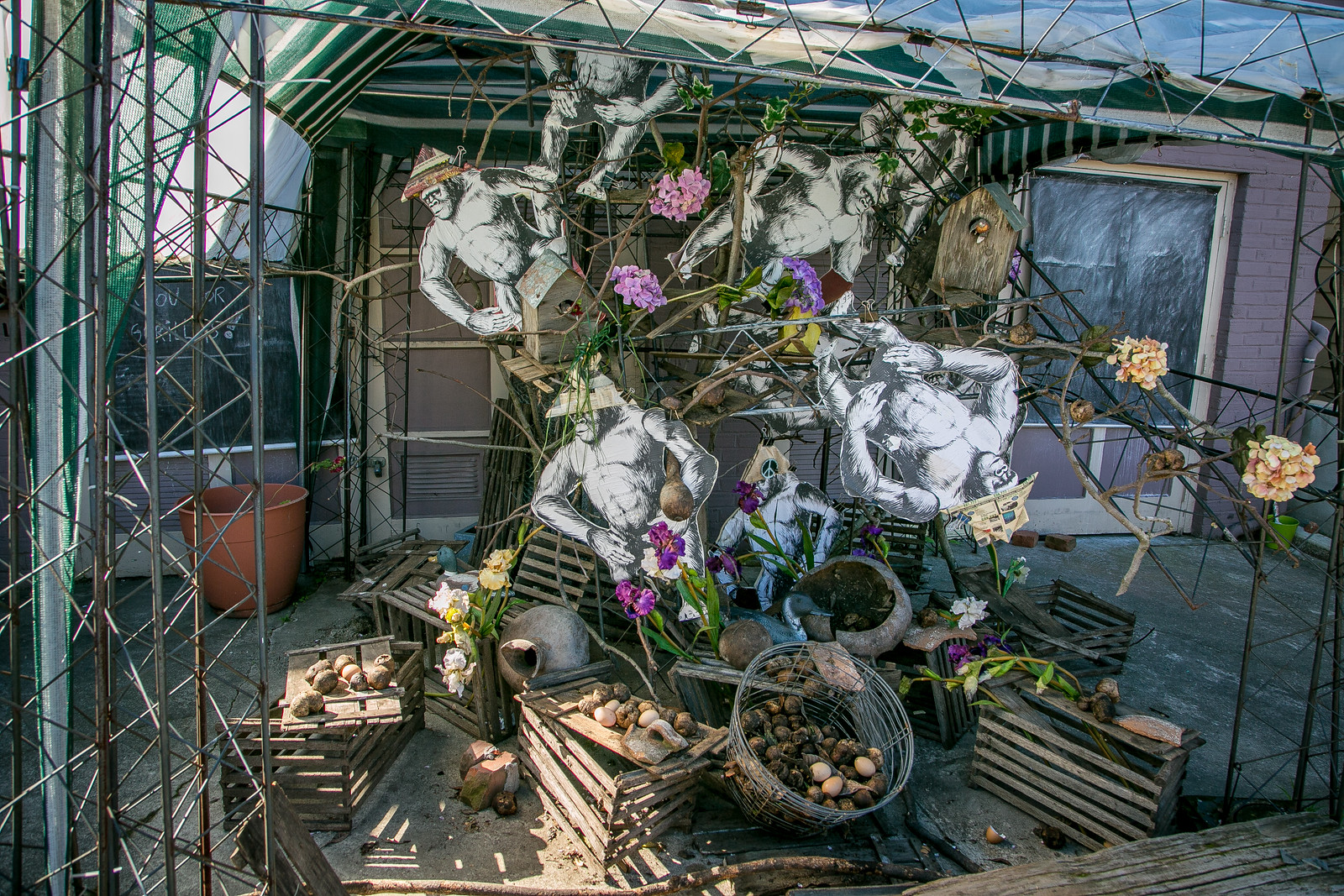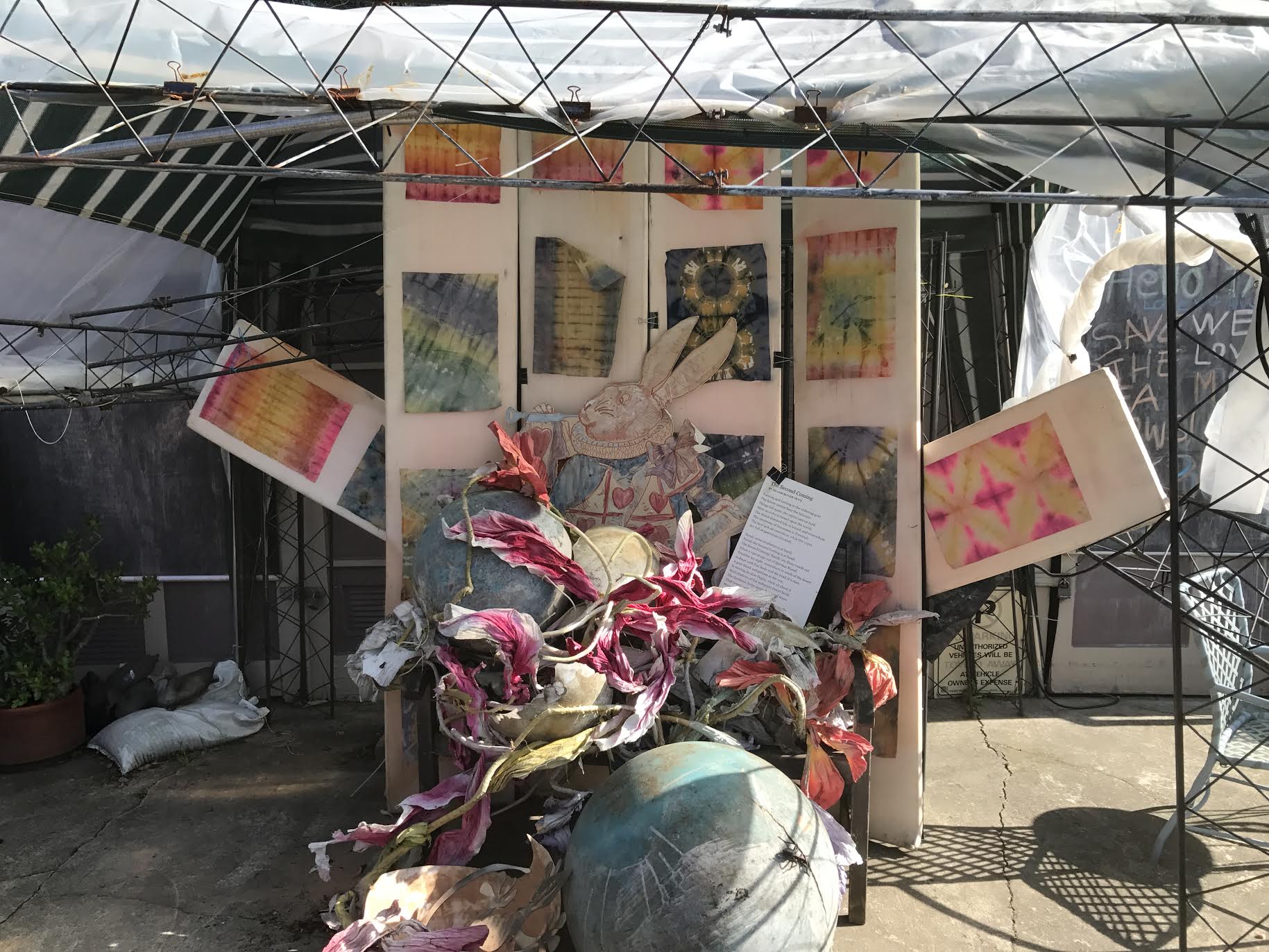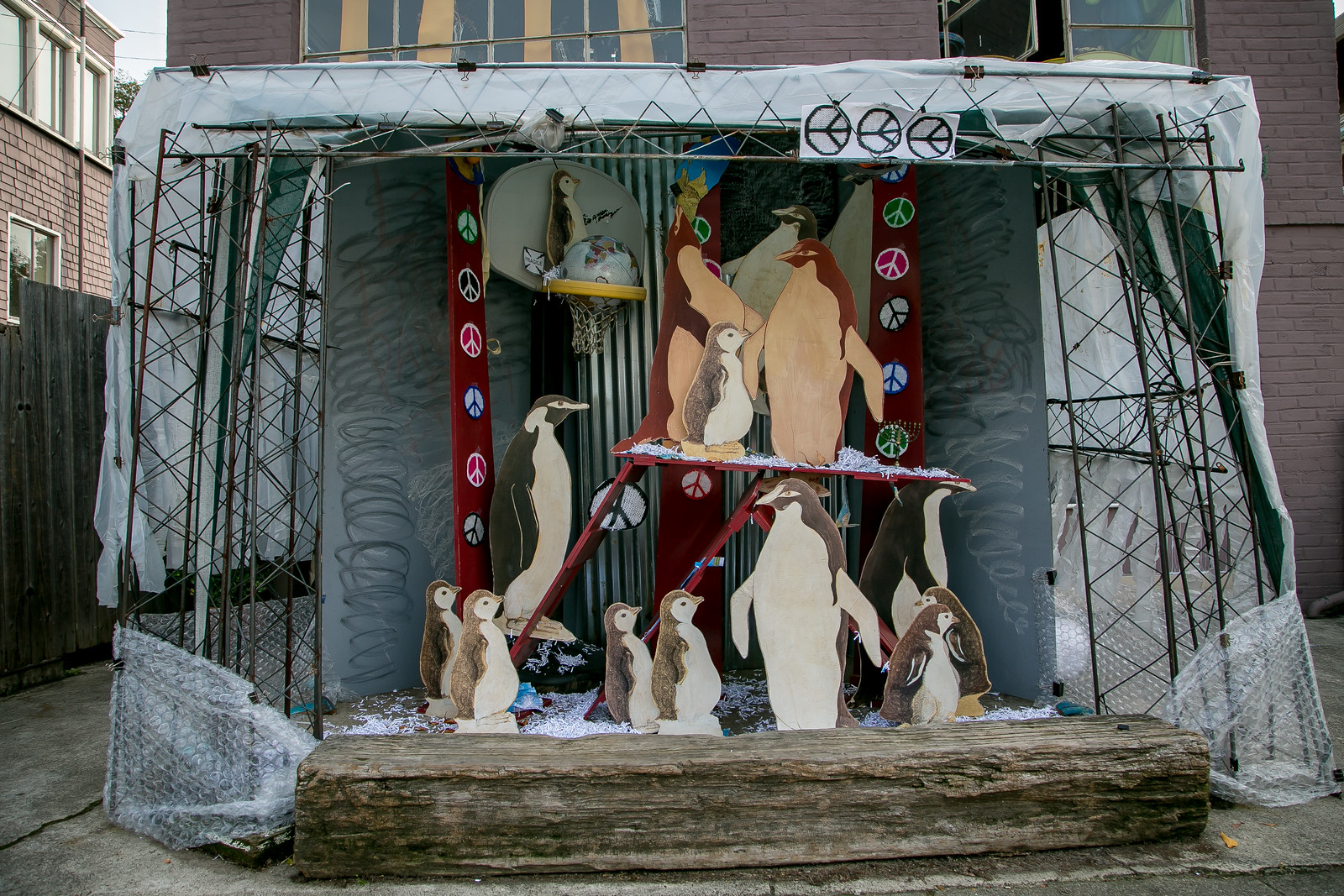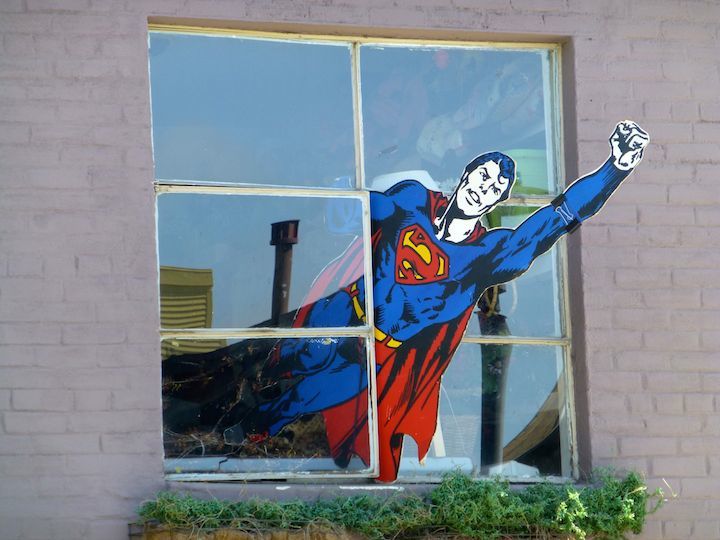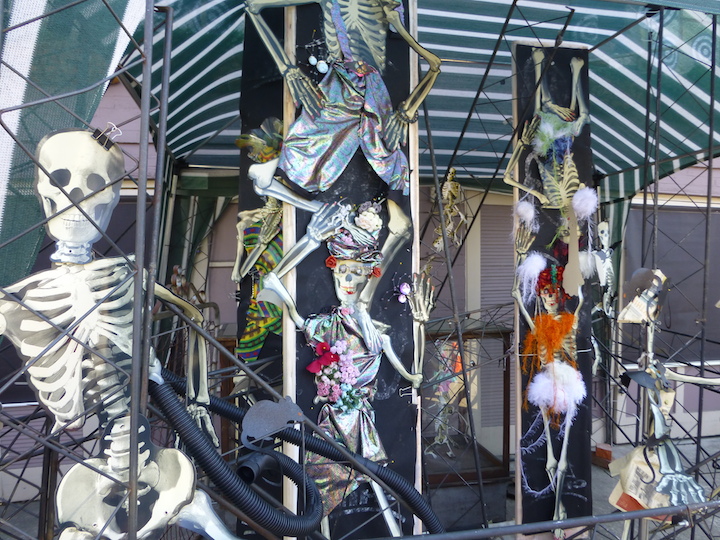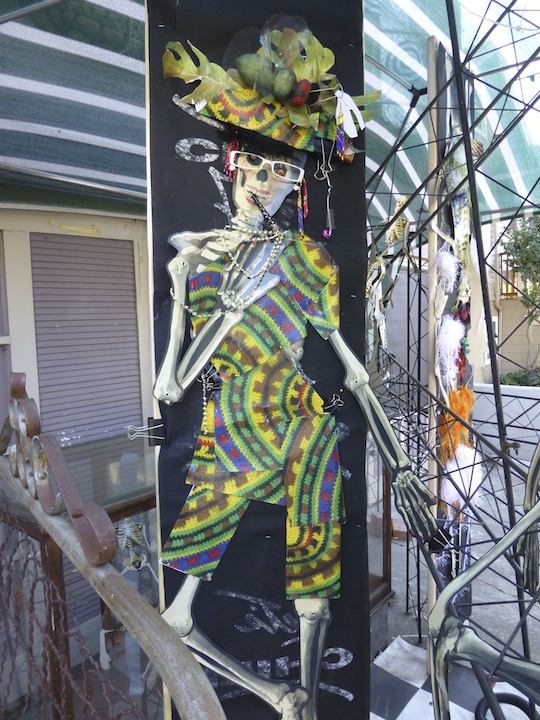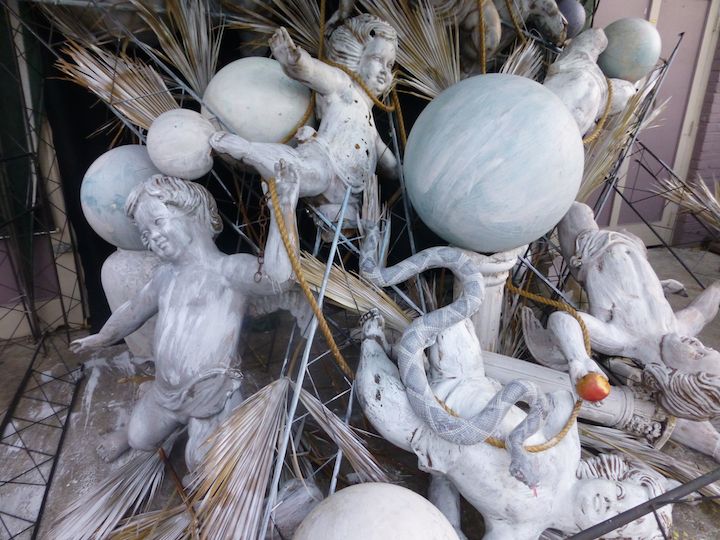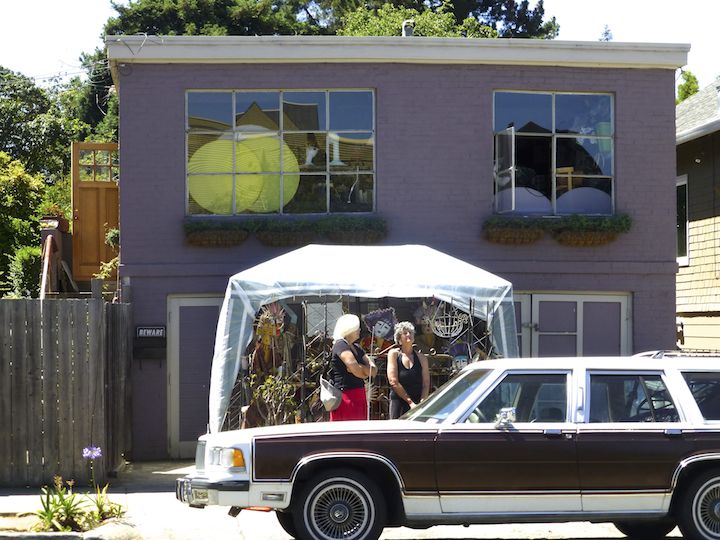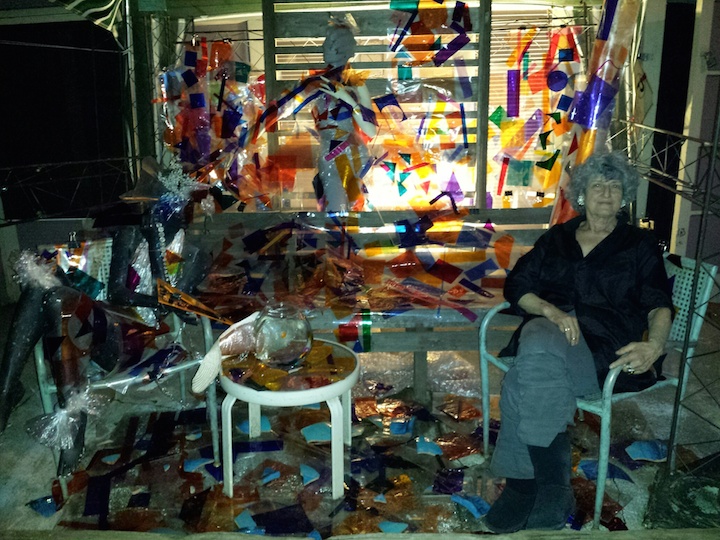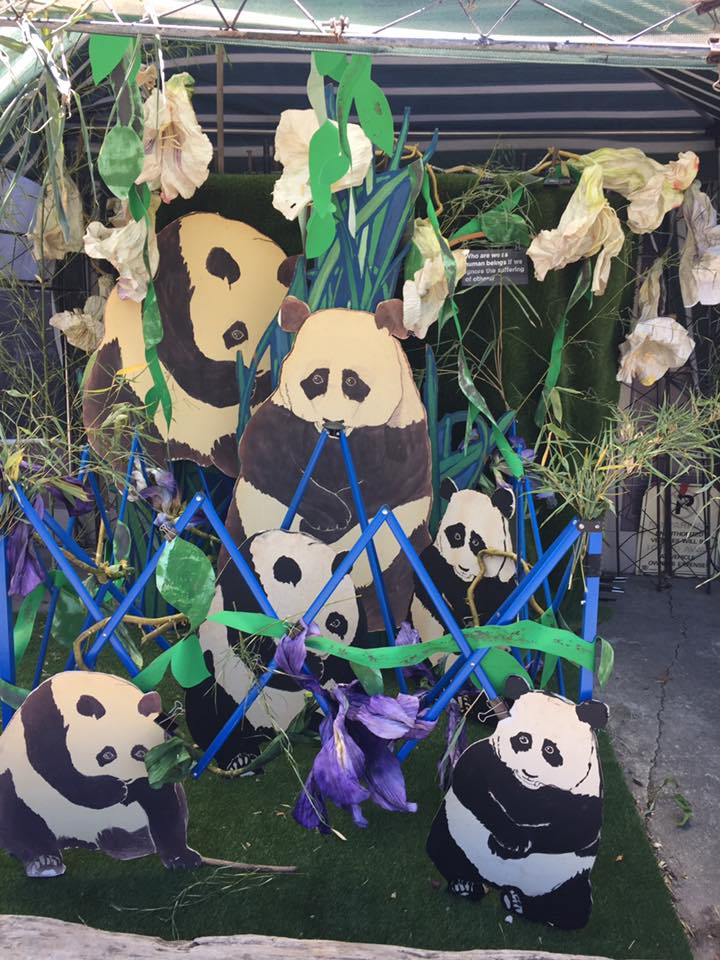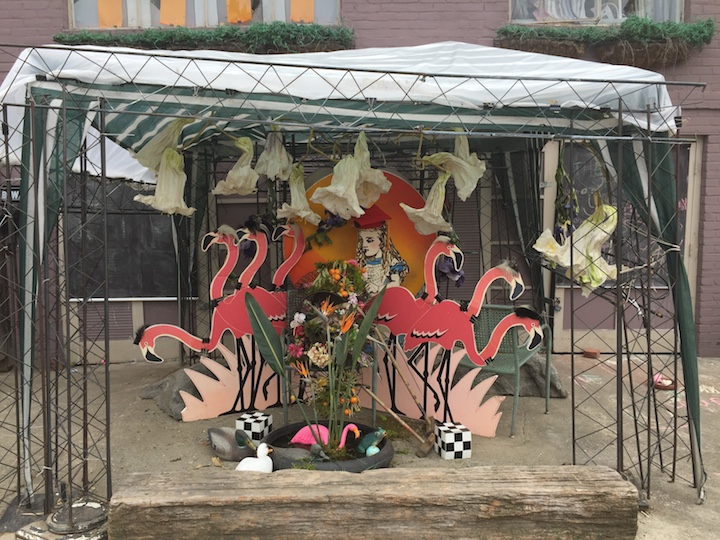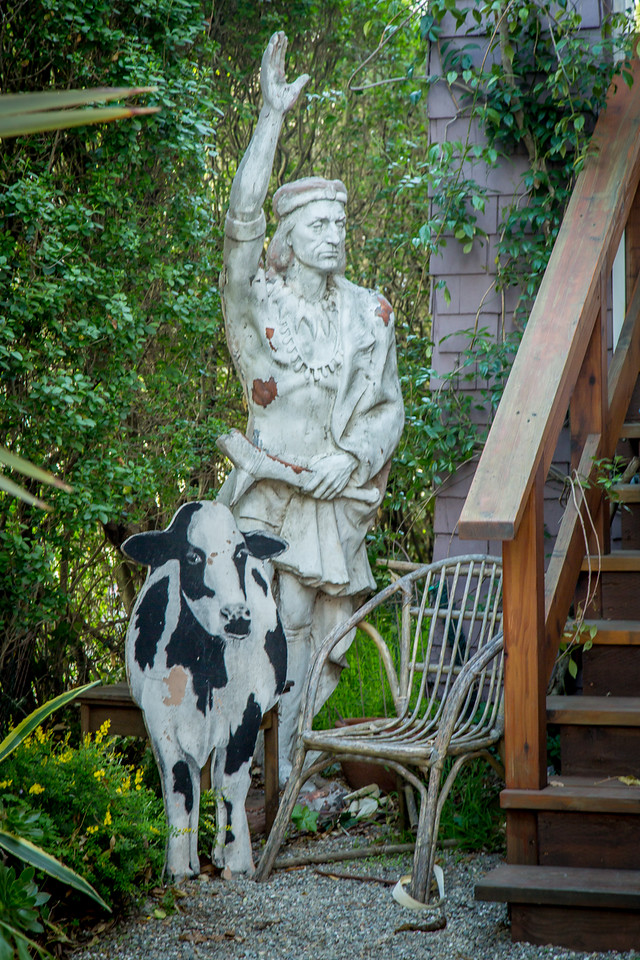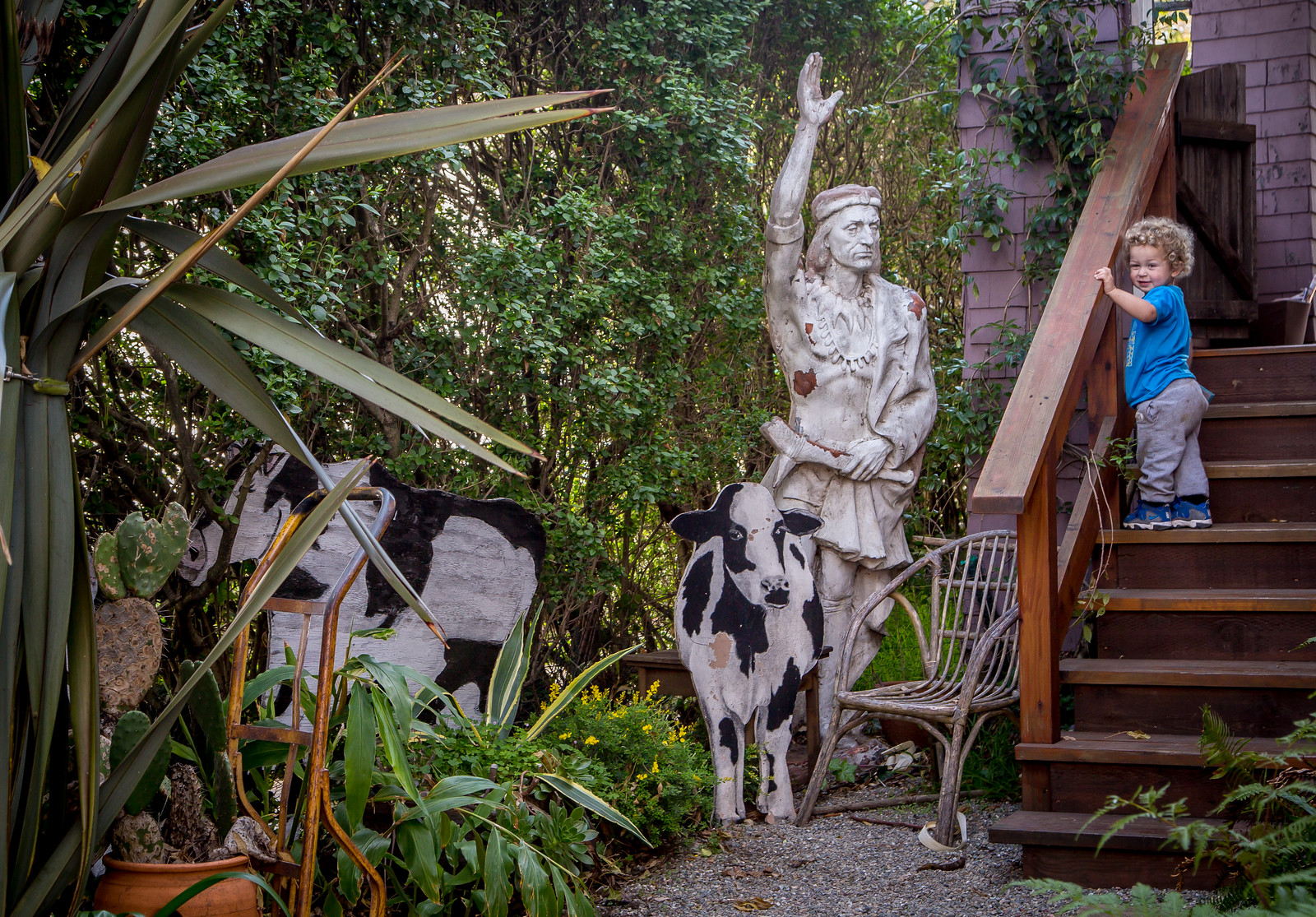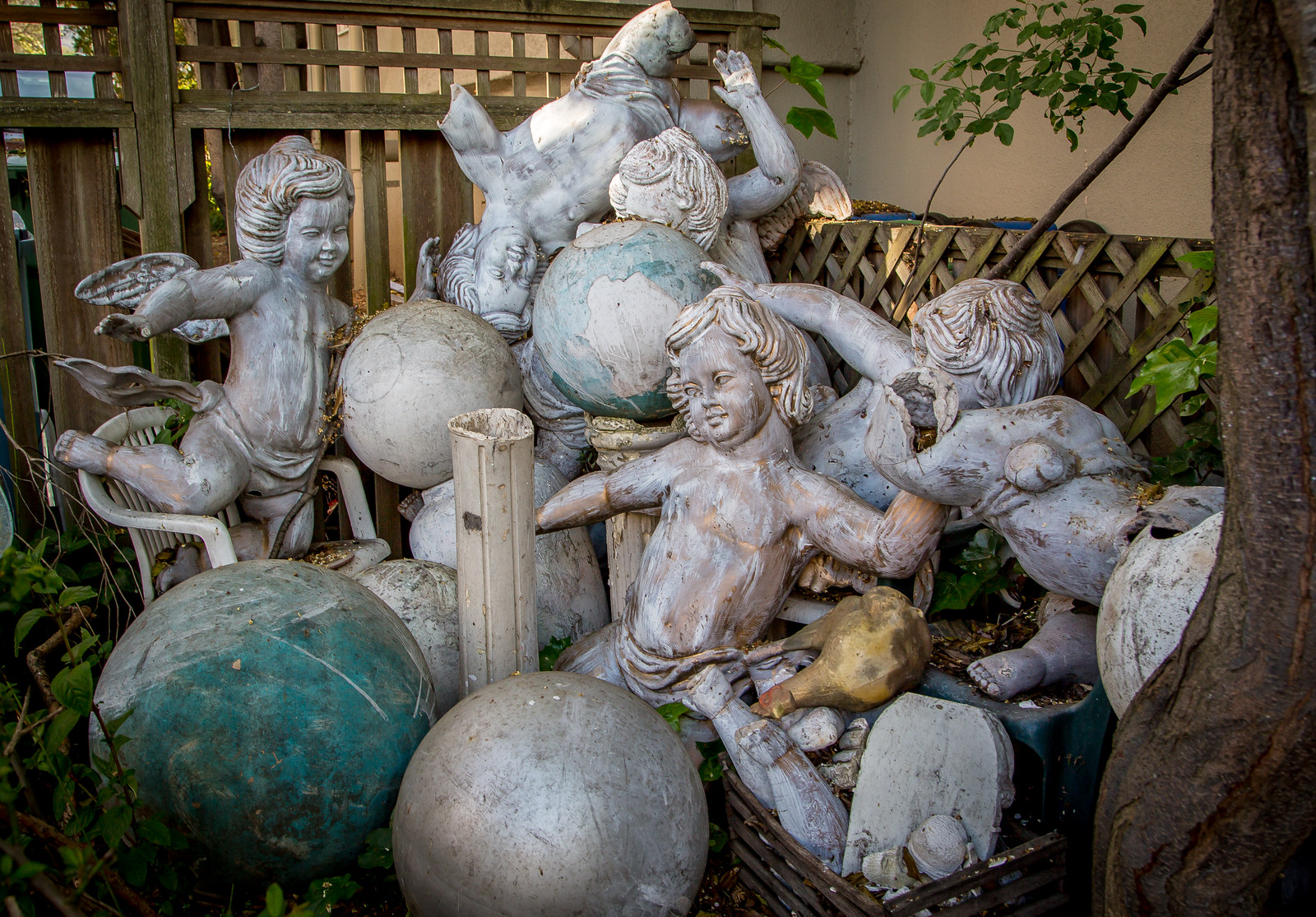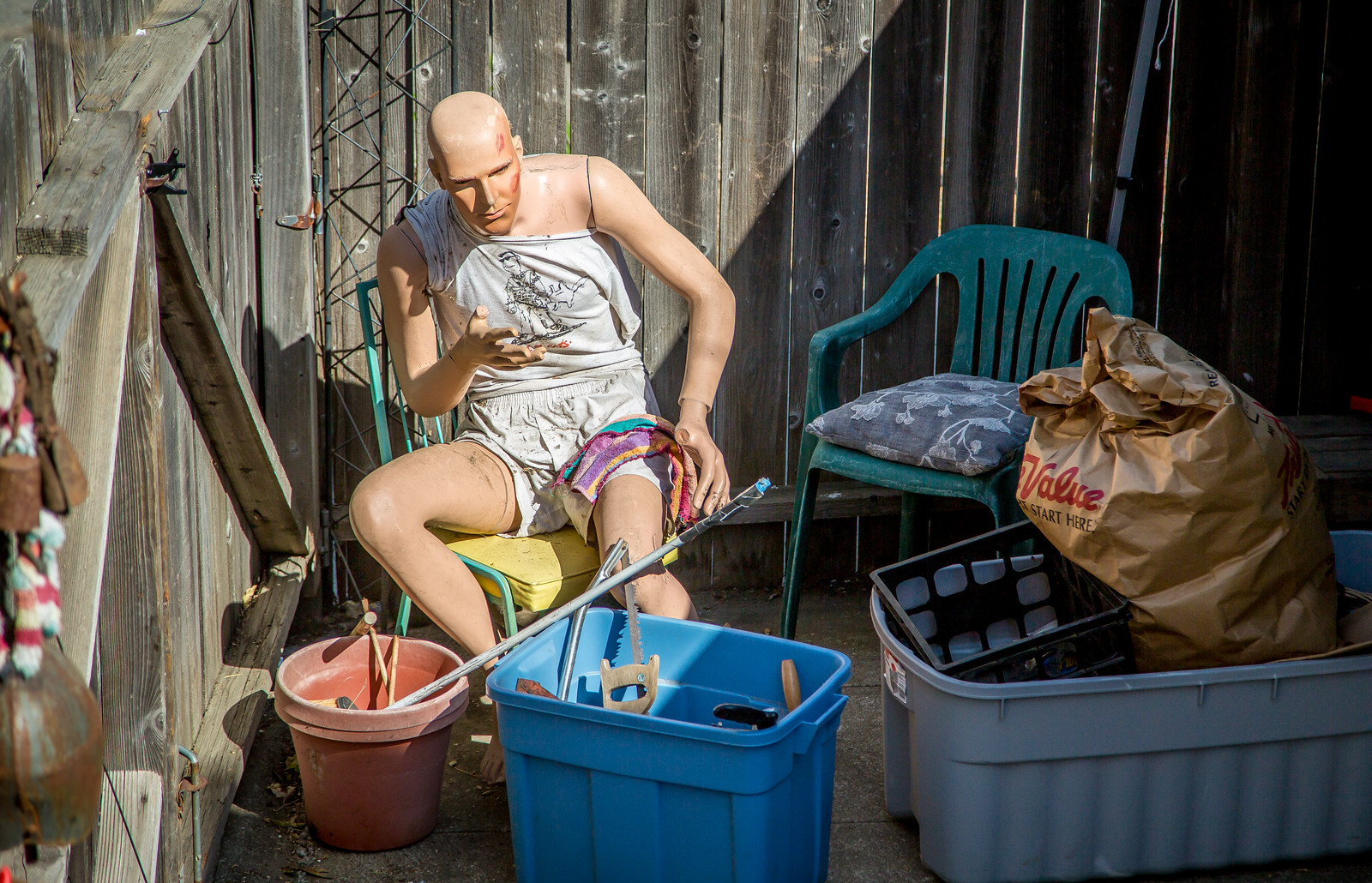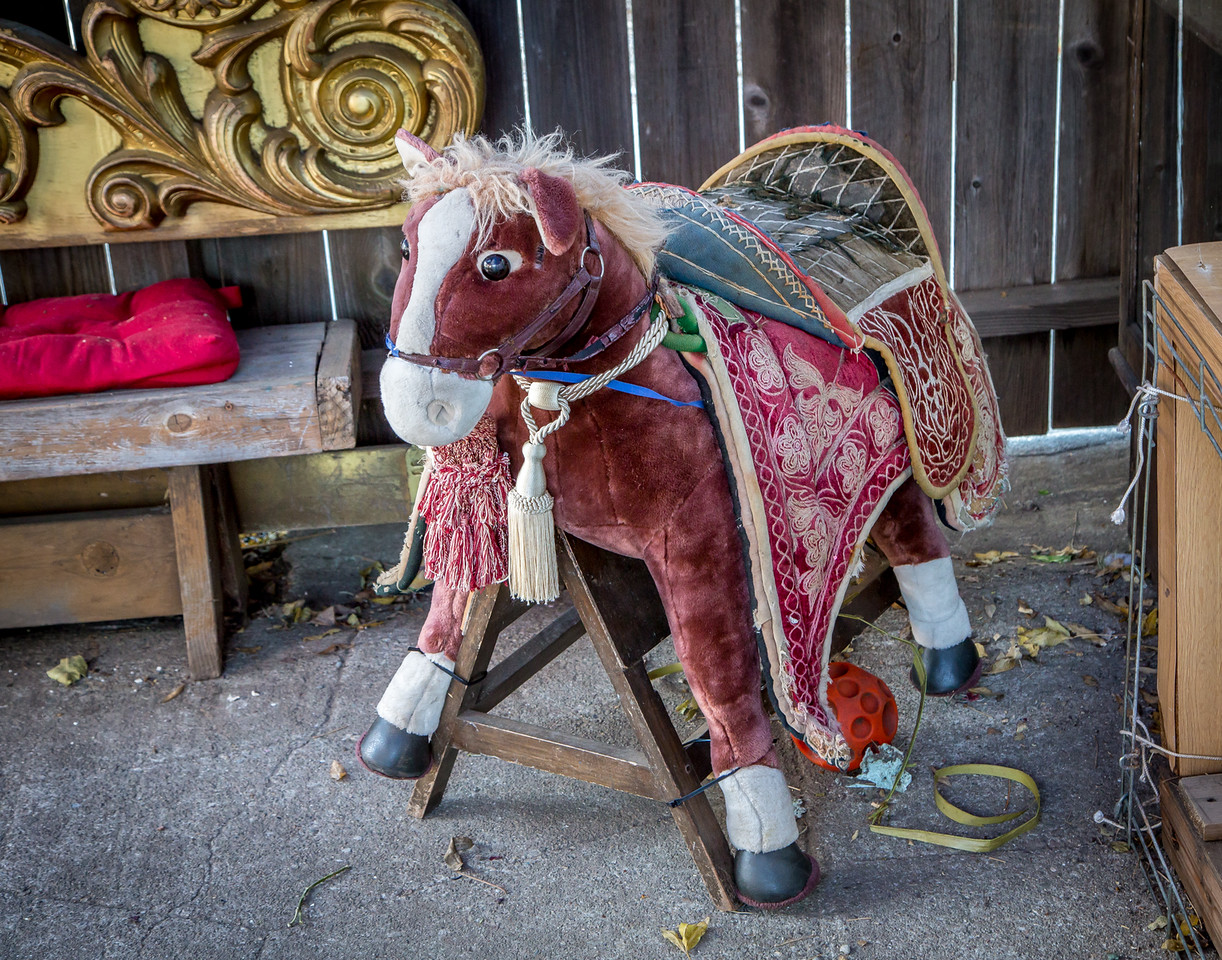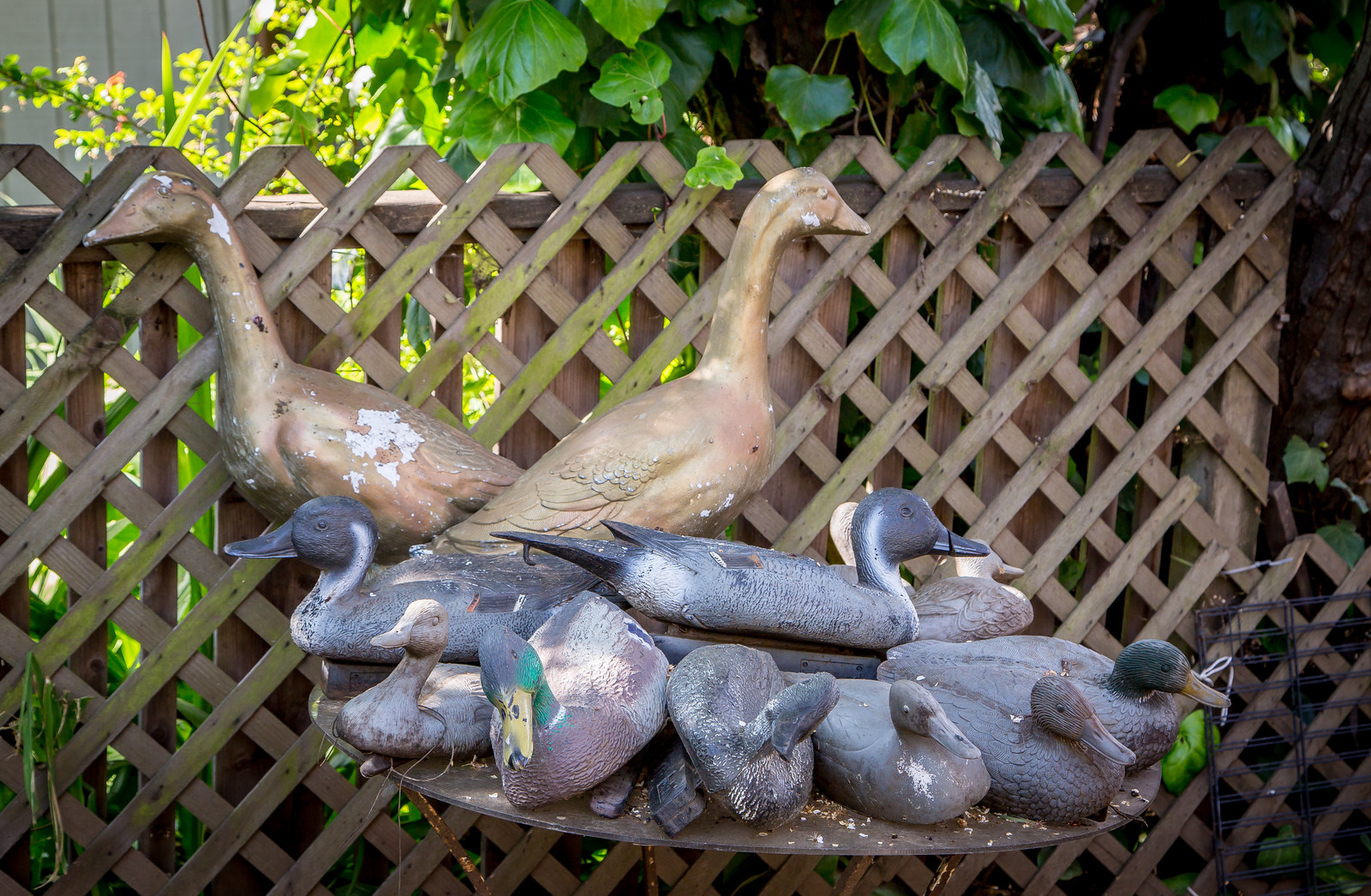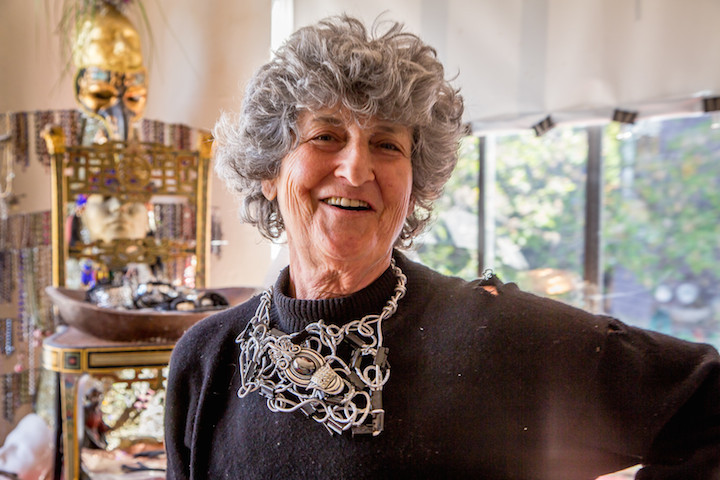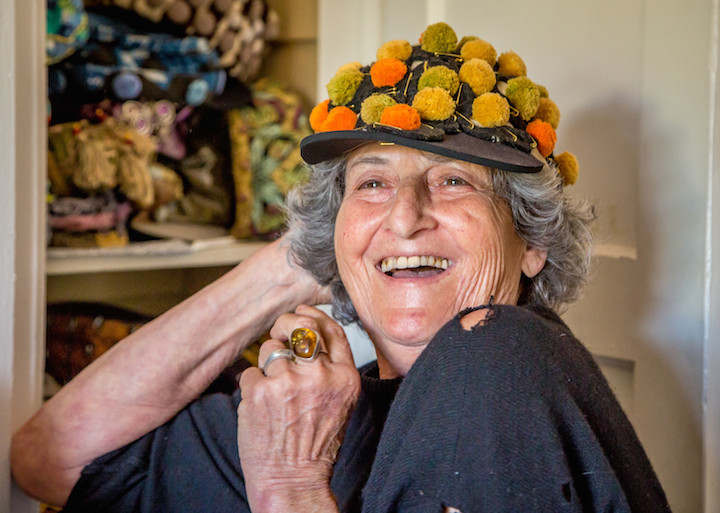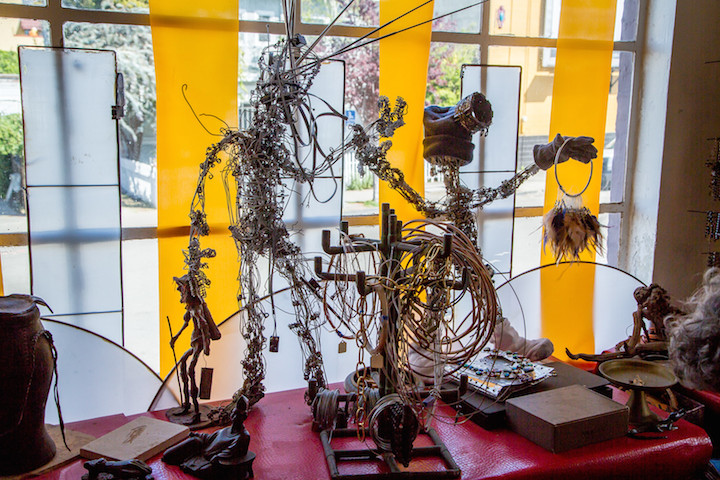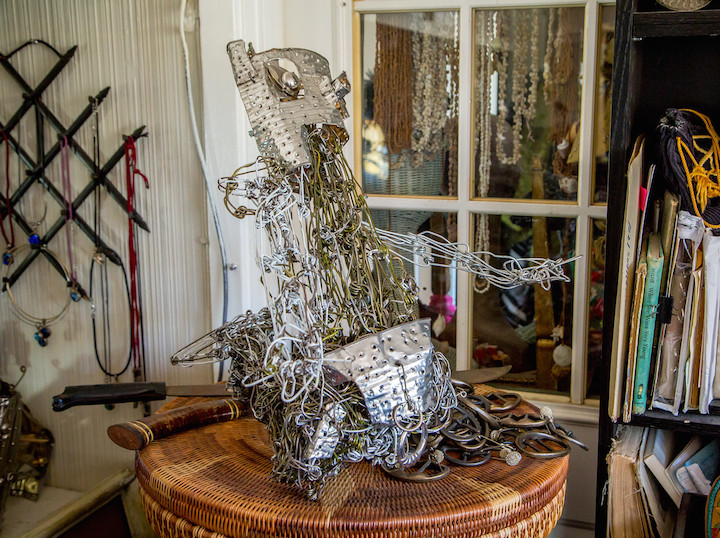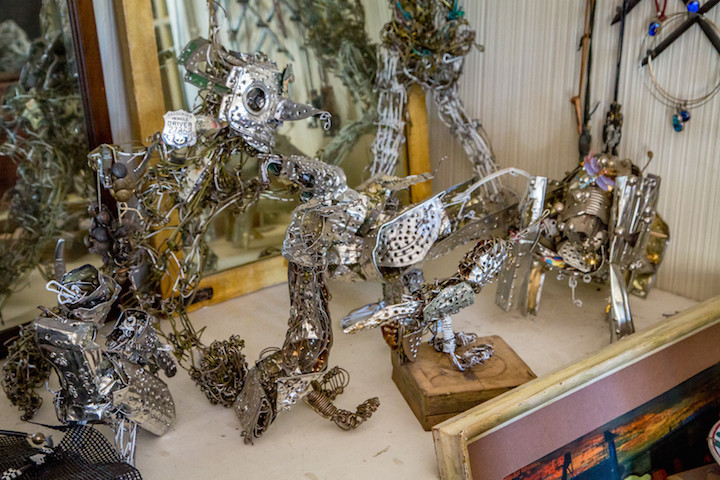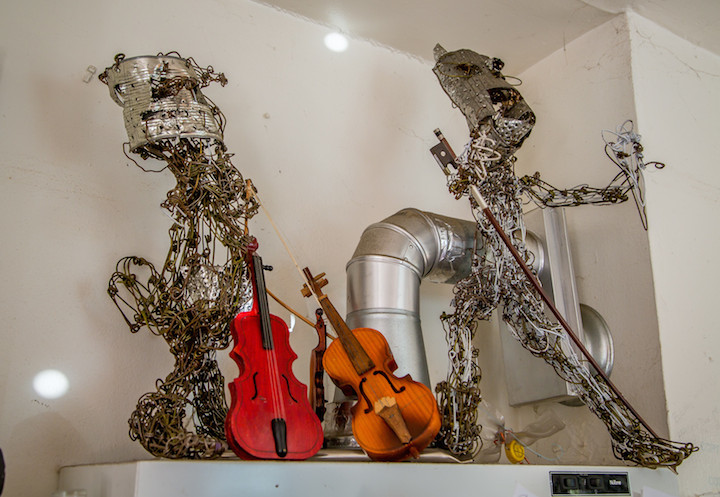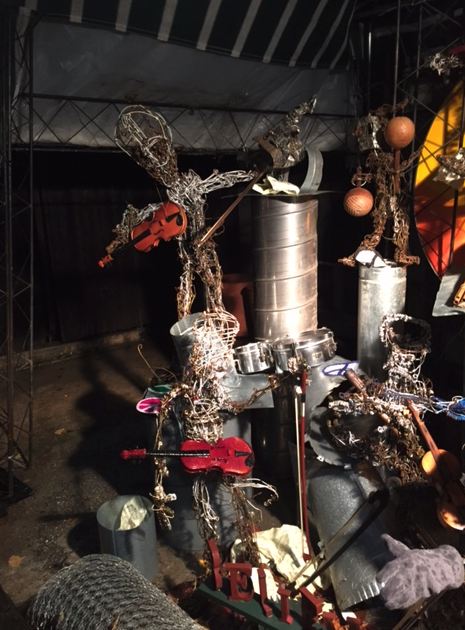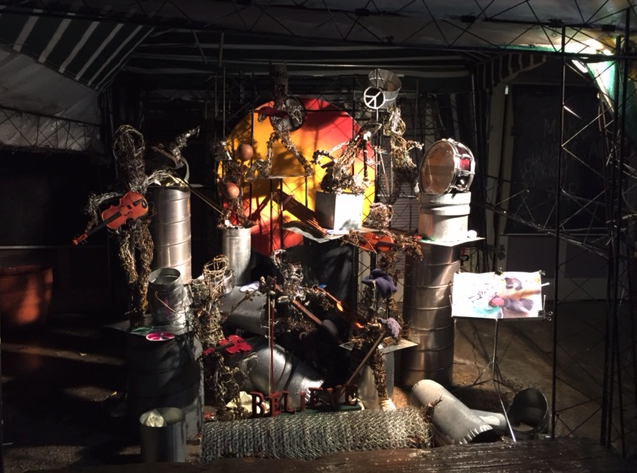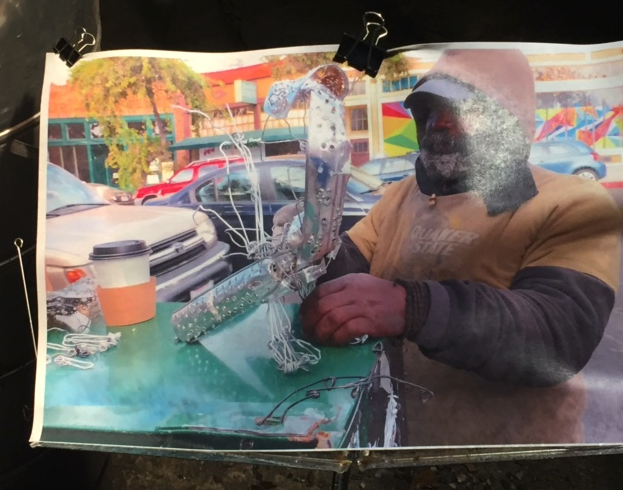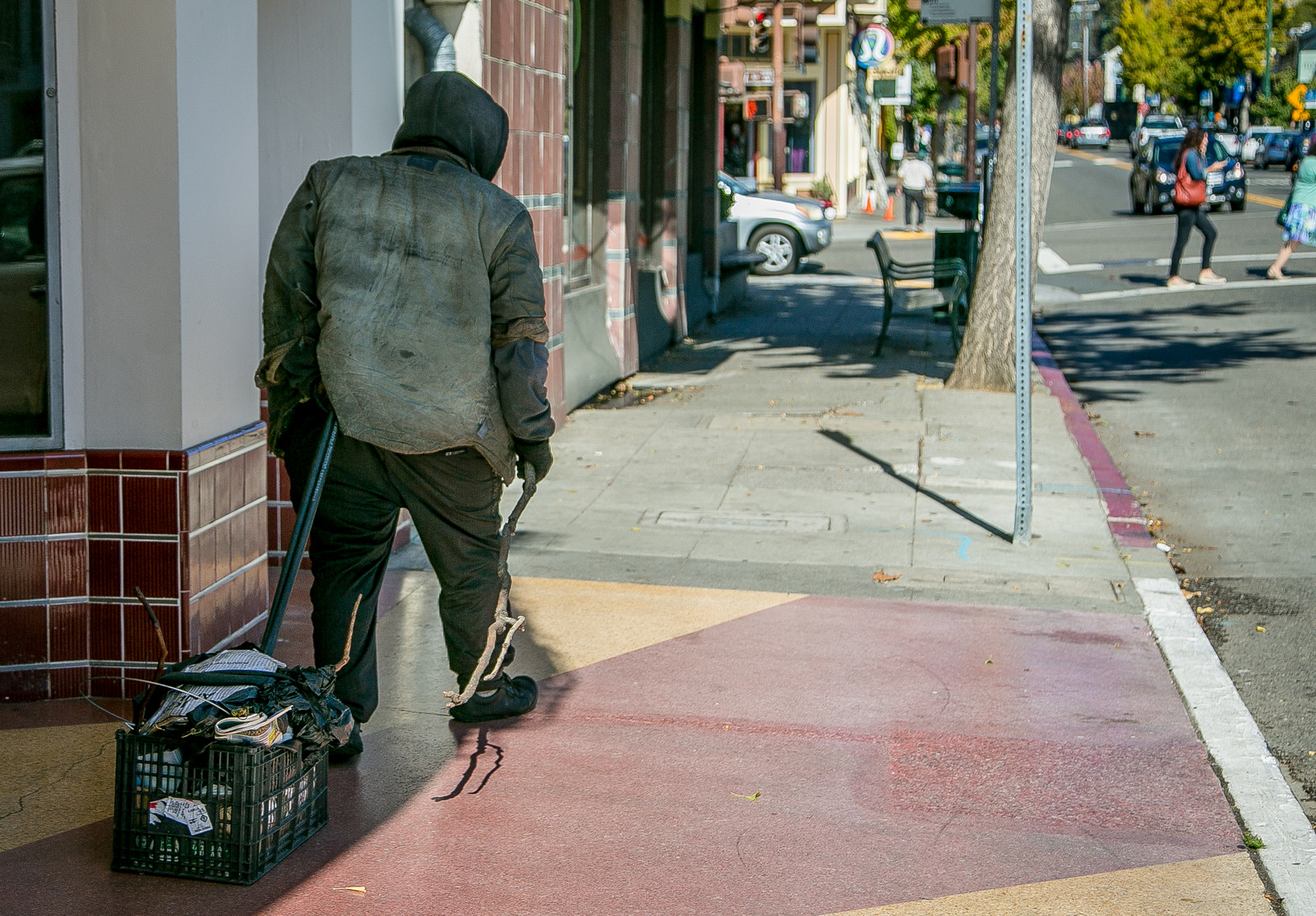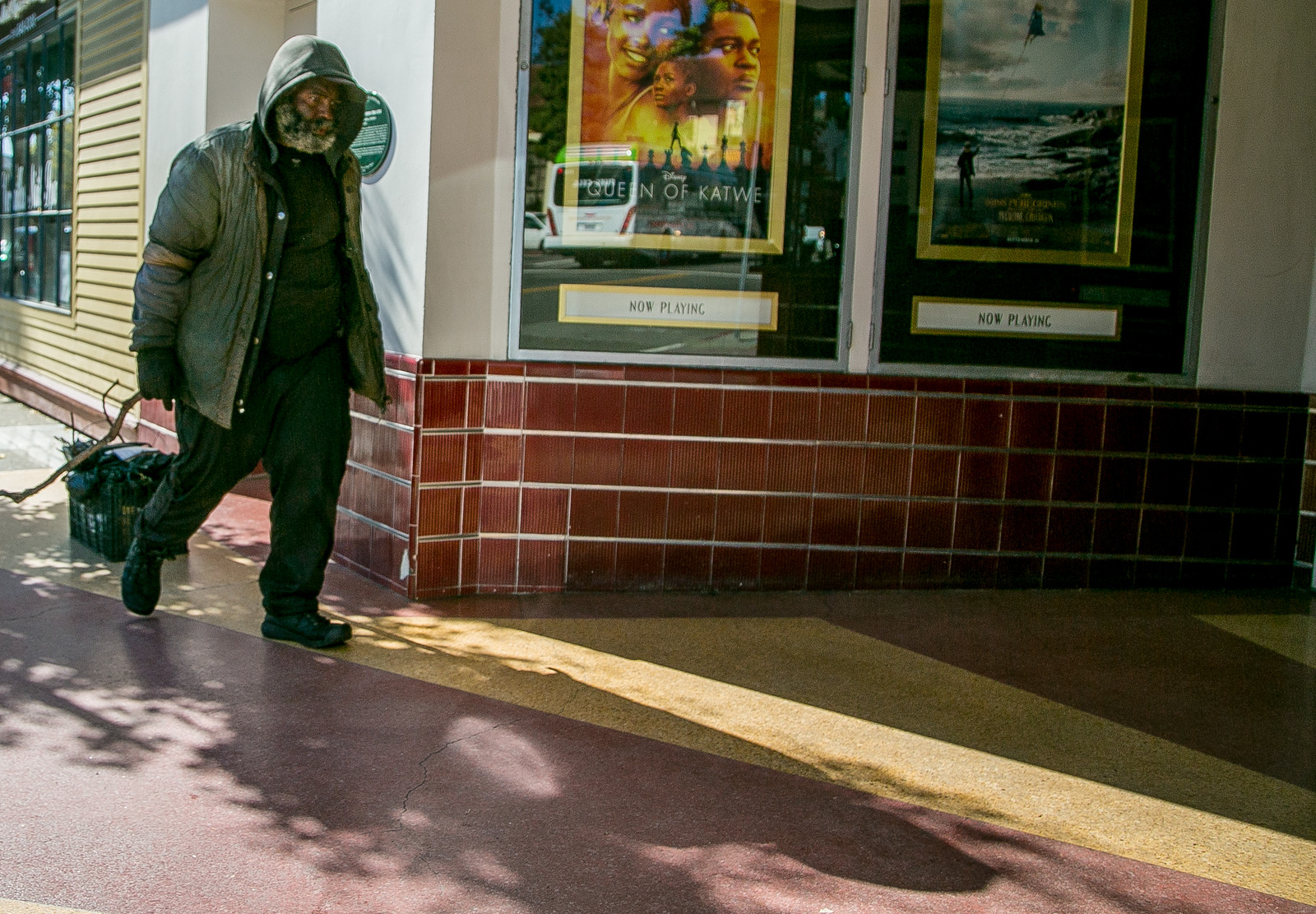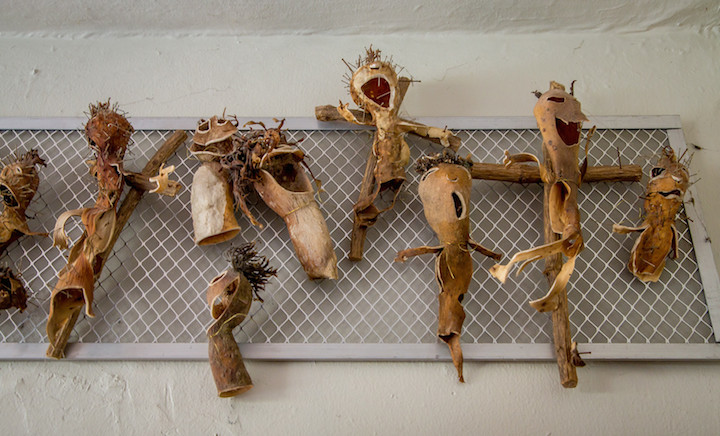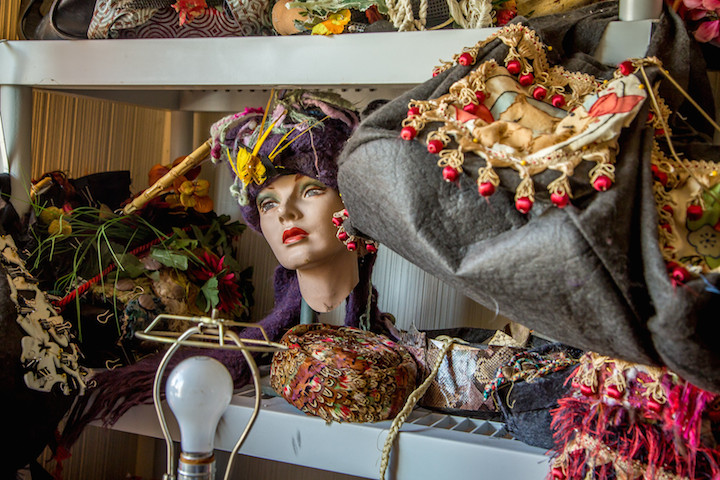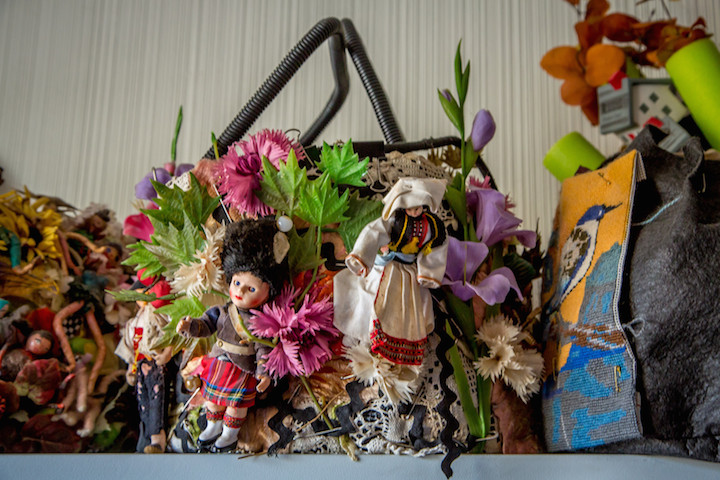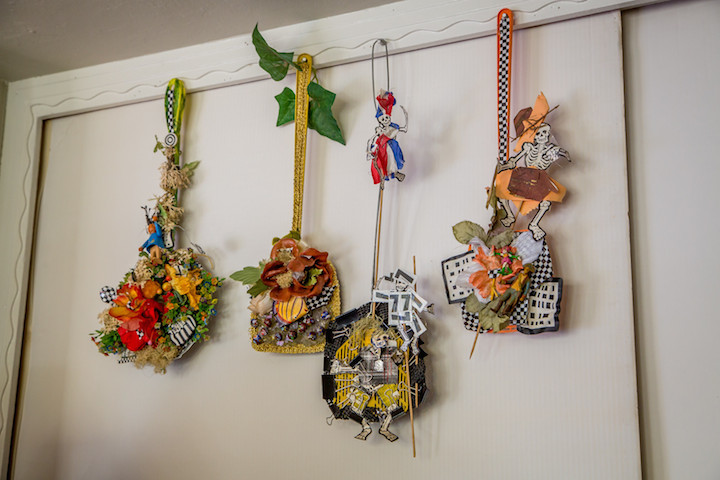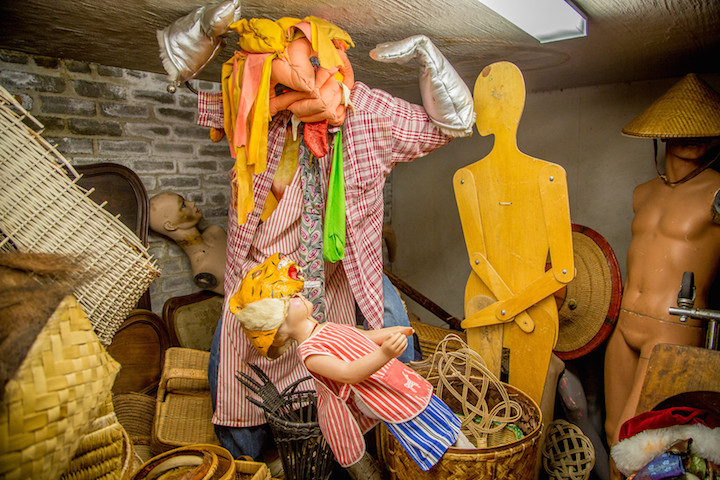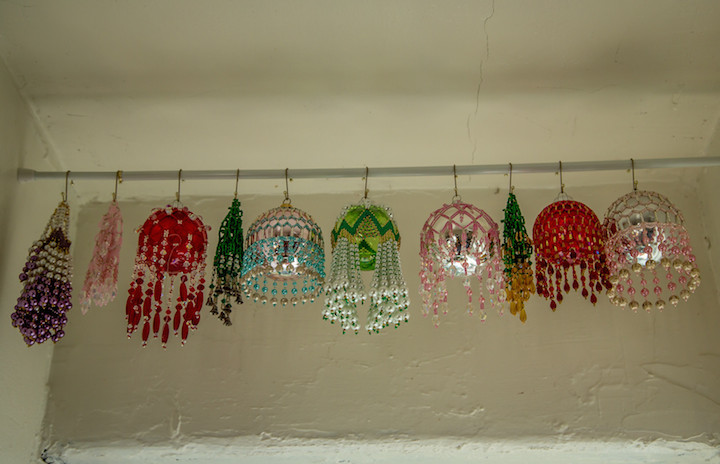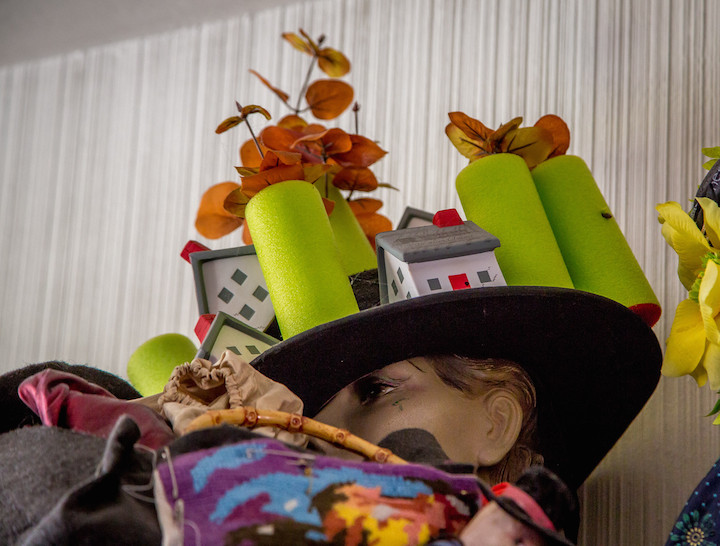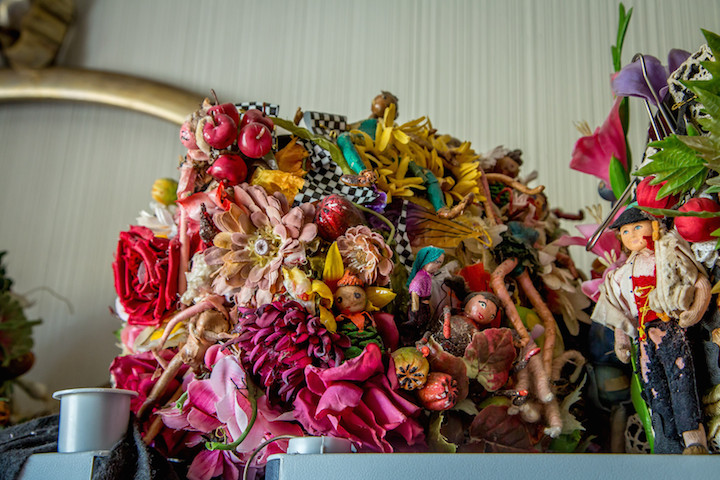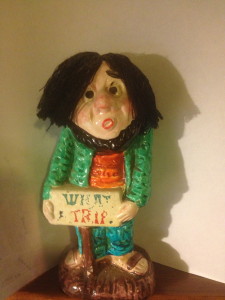At 2634 Webster Street, just west of College, there is a regularly changing themed sidewalk art installation. “Regularly” might not be the perfect adverb there, though, because there is no schedule for changes, no plan for changes, not sketches for the next one – just changes when the moment is right to change.
When I first saw it in the fall of 2014 the theme was native American Indian:
On my most recent visit, the theme was Super Hero Birthday:
UPDATE: Make the photos above my next-to-most-recent visit. I went back a few days later and things had changed.
Dogs and a night cityscape. Okay, I get it!
Late September 2015:
February 2016:
March 2016:
April 2017:
The theme here is the center not holding, drawn from “The Second Coming” by Yeats.
December 2017:
The artist behind these installations in Julie Partos, a Jewish Australian-Hungarian artist who first came to Berkeley with her mother in the early 1960s. Today she lives in a multi-generational family in a compound of houses on the corner of College and Webster. She is a working artist who describes her work as collage, although as we will see in a little bit, she uses the term “collage” a bit differently than you or I might.
Her brother Andrew Partos is a professional photographer, and he sent me these photos of installations past:
Neighbors visit the installations regularly, bringing friends and talking it up. In ten minutes standing outside the house with the installation, half a dozen people stopped and say hello and thank Partos for her gift-to-the-street art. People will sometimes leave an object that fits the installation’s theme; so far, objects have not walked away.
The common large backyard formed from smaller backyards of the several houses is filled with objects which have been or will be used in installations.
Julie is the larger-than-life character that the installations suggest.
She speaks with an Australian accent, but is quick to remind you of her Hungarian and Jewish heritage. The installations suggest something else – an extrovert.
She is an extrovert. Some might say a ham. I would only say that if we all understood that this is a term of praise and endearment, not disparagement. Her energy and joy of life and passion for art are unconfined.
Just as there is no line for Julie Partos between life and art, I could discern no line between home and studio inside the Webster Street house. Most of the art is hers, but there is a large collection of wire sculptures by a street artist she knows only as “The Professor.” t.
In December, 2015, Partos moved The Professor’s art outside into an installation. Sally Francis took these photos of the Professor’s Installation:
Included in the installation is a photograph of The Professor at work at the intersection of Ashby and College:
In the summer of 2016, The Professor was working in the northeast corner of the Solano Avenue Safeway Parking Lot. In October 2016, I spotted him back near College and Ashby and we got these two shots:
Meanwhile – back in the kitchen – on one wall is a collection of dried kelp art.
Yes, dried kelp.
And then – her art and the bins and shelves holding the raw materials for future art. Looking at the purses and hats and fly swatters you can sense, perhaps, what she means when she says “collage.” I make my living with words. I don’t have the words to describe what she means by collage. But I get it.
Who knew? Truly – who knew???
Julie’s installations on Webster Street are all that the Quirky that Berkeley can be. They are gifts to the street. They are whimsical. They change. They don’t fit on a slide rule.
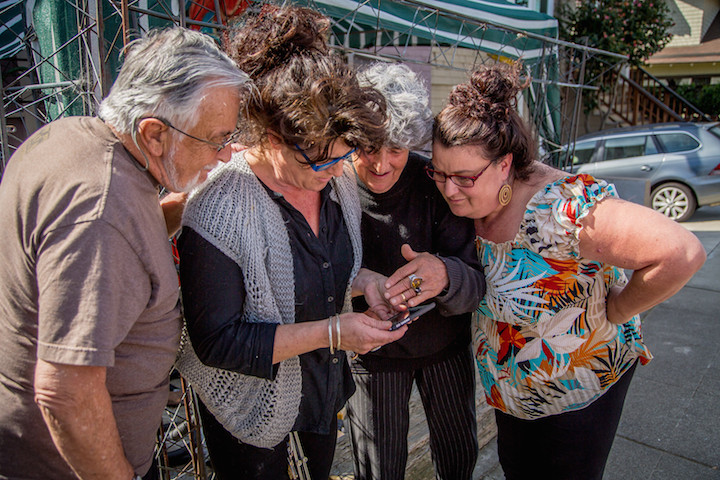
Checking out Quirky Berkeley on an iPhone, March 2015. Robin Clark (father of daughters), daughter Erika, Julie, daughter Monika.
And they are physical manifestations of an inward creativity, non-conformity, and desire to express. And that, my sisters and brothers, is what I am talkin’ about.
My friend agreed. He was practically speechless when he saw these photos. He only had three words.


